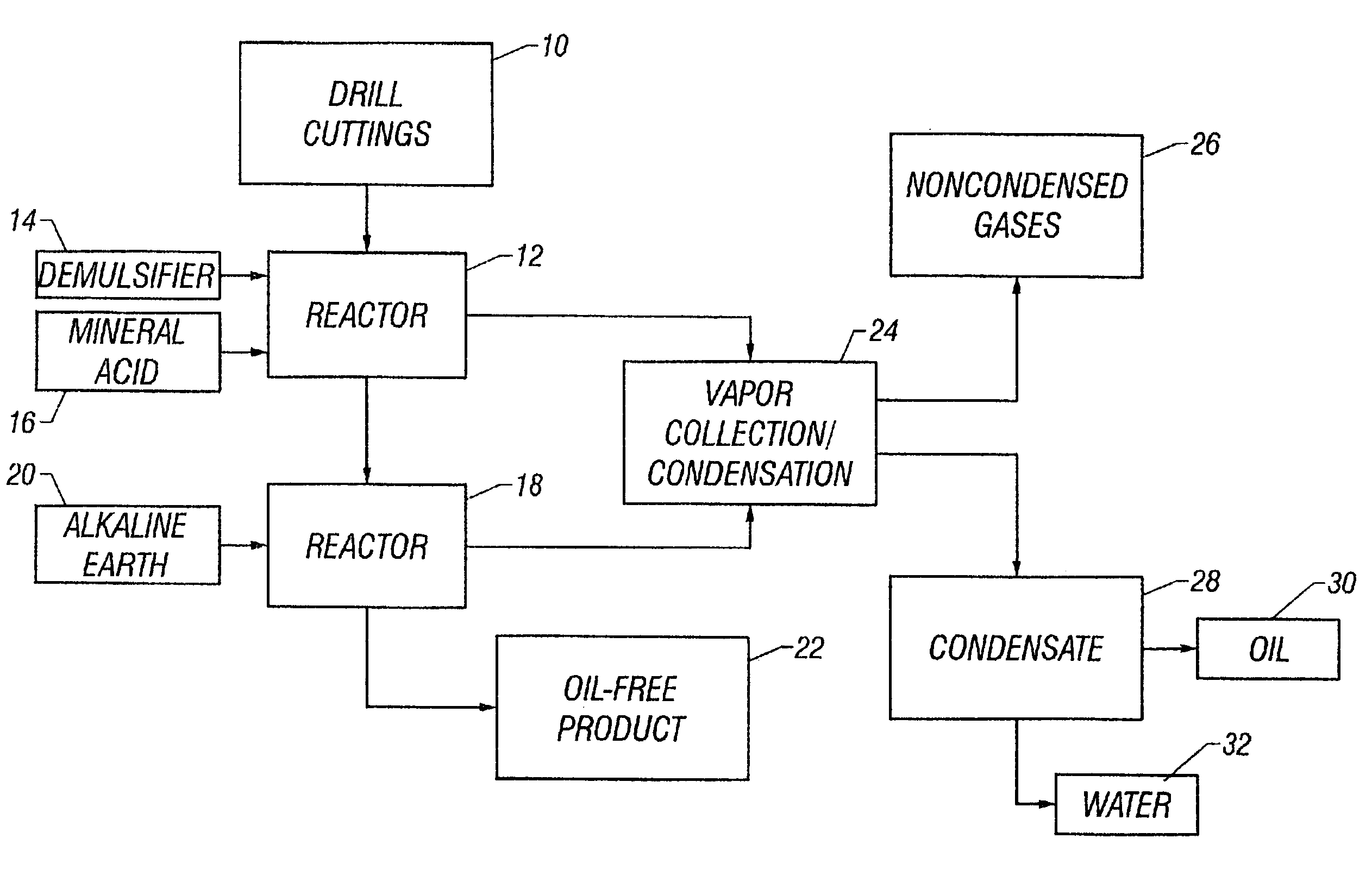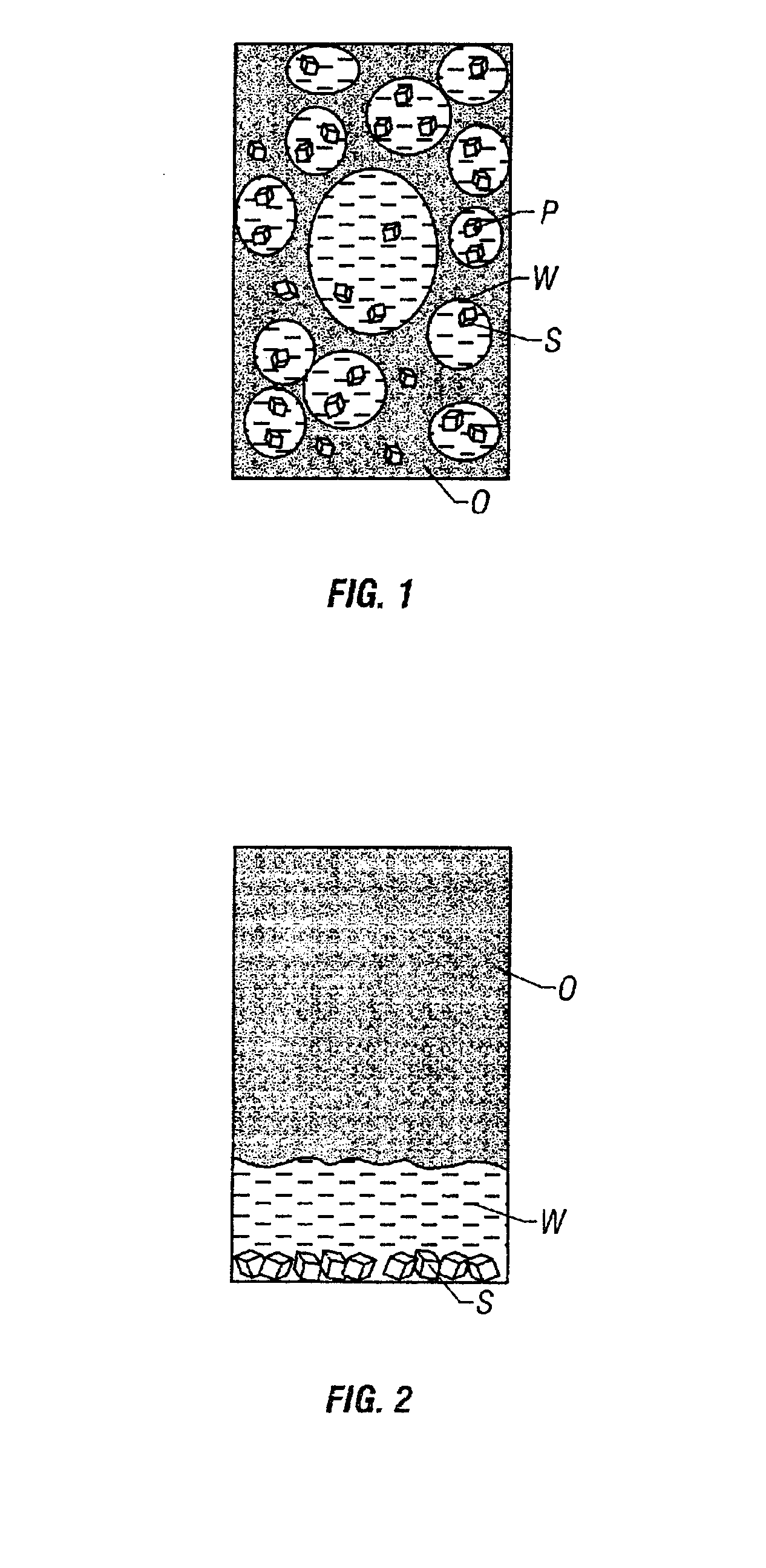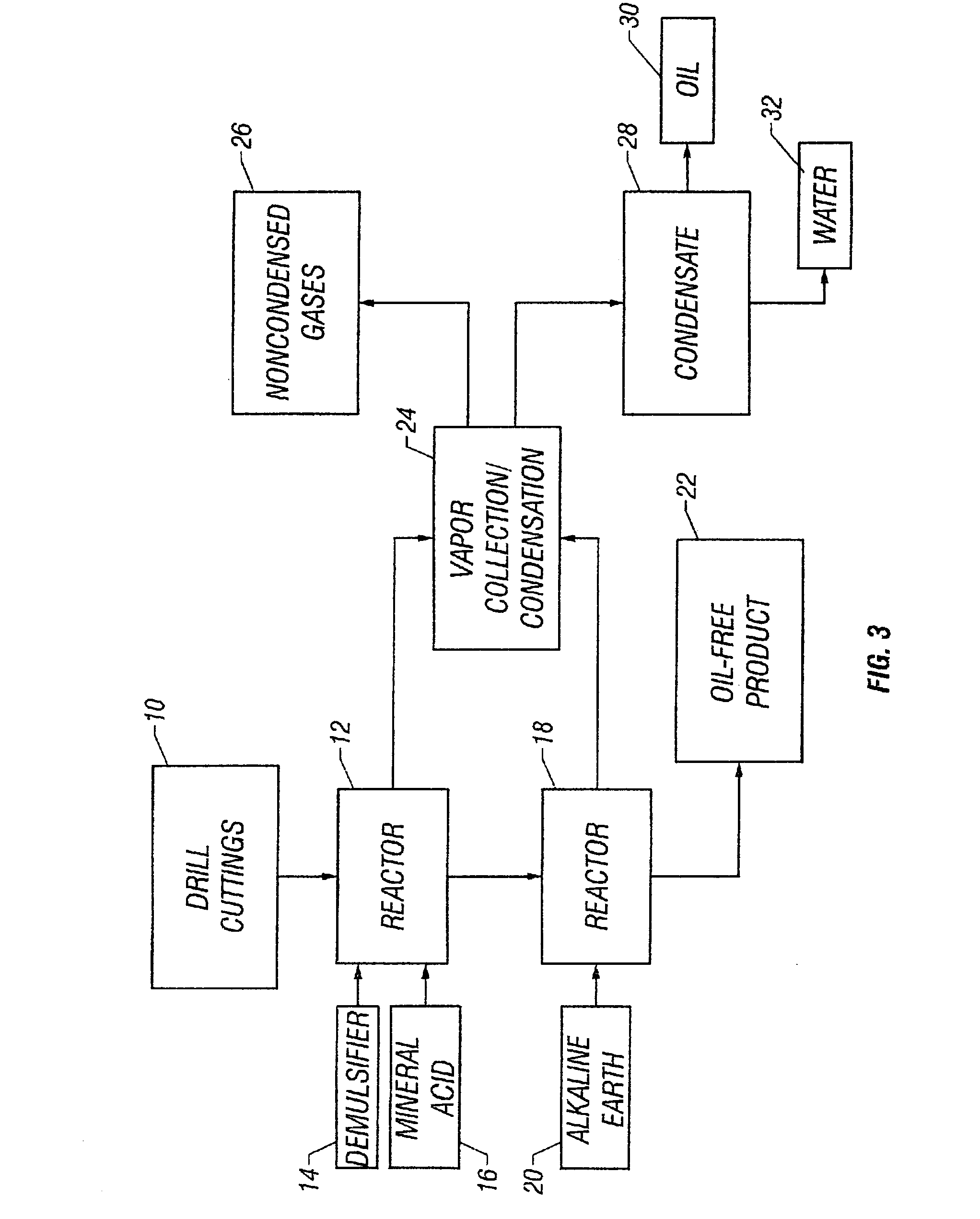Drill cutting treatment method
a treatment method and drill cutting technology, applied in the field of drill cutting treatment, can solve the problems of high cost of formulations, increased production costs, and increased production costs, and achieve the effect of reducing production costs, reducing energy consumption, and maximising equipment efficiency
- Summary
- Abstract
- Description
- Claims
- Application Information
AI Technical Summary
Benefits of technology
Problems solved by technology
Method used
Image
Examples
Embodiment Construction
test of the process and apparatus is conducted to treat drill cuttings contaminated with an oil-based drilling mud. The cuttings have a specific gravity of 1.7, a solids content of 59 weight percent, a hydrocarbon content of 14 weight percent, a water content of 37 weight percent, and a pH of 13. The cuttings are supplied at ambient temperature and are continuously processed at a rate of 22 metric tons per hour (361 kg / min) in a series of two reactors, each having twin parallel shafts approximately 4 m long with 74 paddles / shaft and a 0.5 m diameter and a tip speed of at least 4 m / s. The average residence time of the cuttings in each reactor is approximately 40 seconds. Concentrated (98-99 weight percent) sulfuric acid is continuously added near the inlet of the first reactor at 26 kg / min, and the temperature in the first reactor is 110 .degree. C. near the outlet. Lime is continuously added near the inlet of the second reactor at 25 kg / min, and the outlet temperature of the second ...
PUM
| Property | Measurement | Unit |
|---|---|---|
| residence time | aaaaa | aaaaa |
| weight percent | aaaaa | aaaaa |
| specific gravity | aaaaa | aaaaa |
Abstract
Description
Claims
Application Information
 Login to View More
Login to View More - R&D
- Intellectual Property
- Life Sciences
- Materials
- Tech Scout
- Unparalleled Data Quality
- Higher Quality Content
- 60% Fewer Hallucinations
Browse by: Latest US Patents, China's latest patents, Technical Efficacy Thesaurus, Application Domain, Technology Topic, Popular Technical Reports.
© 2025 PatSnap. All rights reserved.Legal|Privacy policy|Modern Slavery Act Transparency Statement|Sitemap|About US| Contact US: help@patsnap.com



